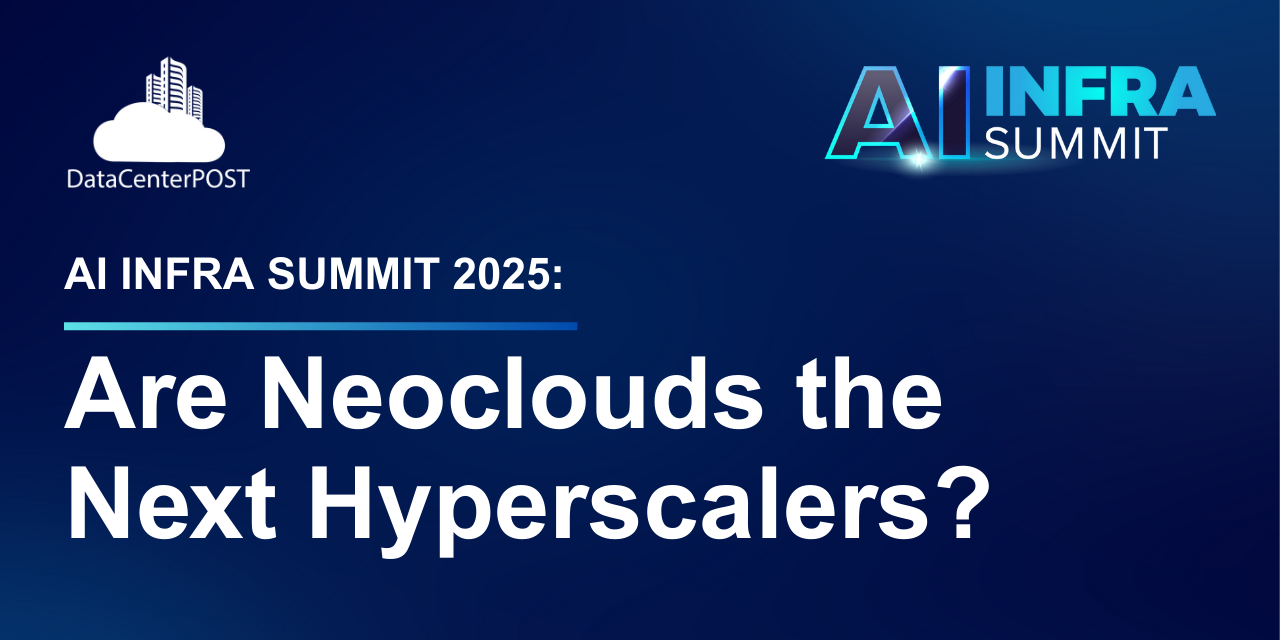At the AI Infra Summit 2025, which was held at the Santa Clara Convention Center in California, gathered industry leaders to explore one of the most pressing questions facing digital infrastructure today: Will Neoclouds emerge as the next hyperscalers, or are they a transitional step in the evolution of AI data centers?
During a panel discussion, moderated by Ilissa Miller, CEO of iMiller Public Relations, the panel brought together three experts at the forefront of this transformation:
- Priya Kesavan, Principal, Azure AI Systems Strategy at Microsoft
- Ty Miller, Chief Commercial Officer at STACK Infrastructure
- Tom Traugott, SVP of Strategy at EdgeCore
Together, they unpacked how Neoclouds, which are often synonymous with GPU-as-a-Service and “AI Clouds”, are reshaping the market, competing with hyperscalers, and redefining infrastructure design
Defining Neoclouds
The panel began by clarifying what exactly Neoclouds represent. According to Tom Traugott, they can be defined as specialized providers delivering GPU capacity at scale, often without the legacy infrastructure constraints hyperscalers must contend with. This specialization enables faster adoption of technologies such as direct-to-chip liquid cooling and densified racks, positioning Neoclouds as agile disruptors.
Priya Kesavan emphasized that AI workloads differ fundamentally from general-purpose clouds. Unlike hyperscalers, who excel at managing heterogeneous workloads, Neoclouds thrive by focusing on homogeneous, AI-specific tasks. This makes them more nimble, and not just a stopgap. “AI Clouds have a sustainable business model,” she noted, adding that hyperscalers increasingly look to collaborate with Neoclouds for their agility.
What wasn’t discussed is the guaranteed privacy that Neocloud providers could offer customers by providing them access to private cloud-based AI capacity to build and customize their own private-clouds, using solely private data to operate their businesses securely.
Economics, Risk, and Creditworthiness
From a financial standpoint, GPUs remain expensive, and building Neocloud businesses requires high utilization rates and creative financing. Ty Miller explained that creditworthiness is a critical consideration when leasing capacity, “When we’re putting hundreds of millions into dirt, utilities, and buildings, we need creditworthy partners. That’s the reality of capital-intensive infrastructure.”
Strategies to mitigate risk range from security deposits to collateralizing GPUs and even guarantees backed by chip manufacturers, including NVIDIA. Traugott added that while Neoclouds initially relied heavily on private credit, traditional banks are now entering the market. This is an indicator of growing maturity and confidence in the GPU-as-a-Service business.
The Supply Chain Race
One of the hottest topics was the ongoing race for power and chips. Priya pointed out that while GPU supply is easing, power availability has become the defining bottleneck. Whoever can secure land, sustainable energy, and deploy infrastructure fastest will win the next phase of the race.
Traugott underscored four key ceilings to growth by 2030:
- Power
- Chip production
- Latency
- Scale
Adding to this list, Ty highlighted the role of microgrids and island power solutions as bridging strategies to meet unprecedented demand.
Hyperscalers vs. Neoclouds
The panel agreed that hyperscalers and Neoclouds each bring distinct advantages. Hyperscalers build vertically integrated stacks including custom silicon, TPUs, and optimized global infrastructure. Neoclouds, meanwhile, tend to be Nvidia-aligned, nimble, and able to design purpose-built facilities from the ground up.
Priya noted the growing diversity in chip ecosystems including TPUs from Google, silicon from AWS and Microsoft, and AMD’s entry. The combination suggests that the future will not be monolithic. Instead, customers will benefit from tiered infrastructure that separates training from inference workloads, offering efficiency gains and choice.
Key Takeaways
To close, Ilissa Miller summarized the discussion with three central insights:
- Neoclouds deliver agility and GPU specialization but must overcome sustainability and credit hurdles.
- Hyperscalers have integration and scale advantages, but face challenges in speed and flexibility.
- The future will be a hybrid landscape, where collaboration, differentiated infrastructure, and innovative financing models enable the industry to meet soaring AI demand.
Or, as Priya put it:
“We compete with Neoclouds, and we collaborate with them. It’s going to be an exciting future.”
To ensure you don’t miss conversations like this, save the date for the The AI Infra Summit 2026. The event will take place September 15-17. 2025 at the Santa Clara convention center in California.


